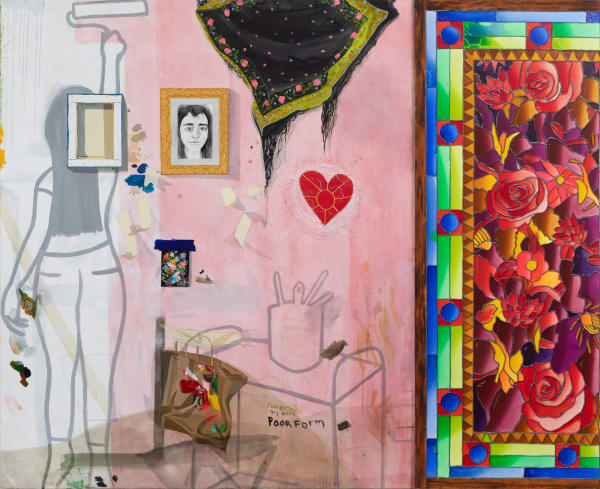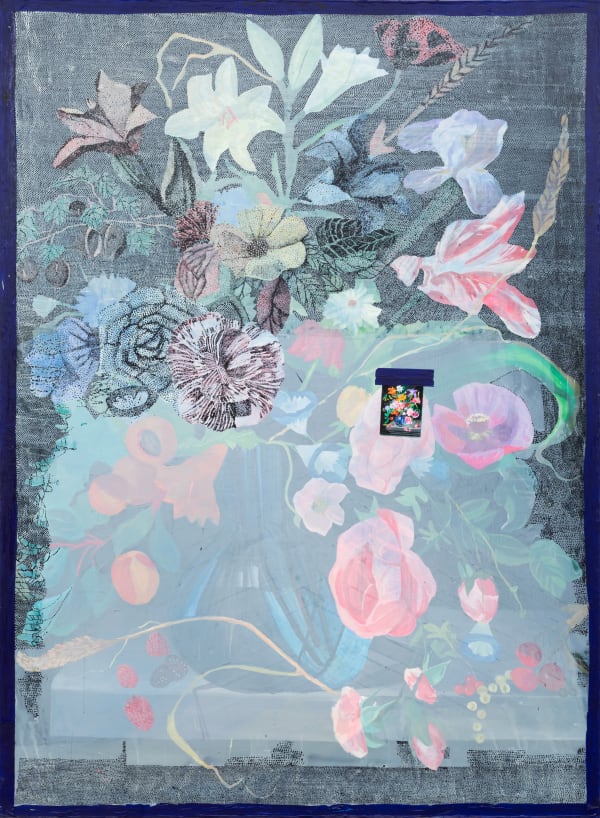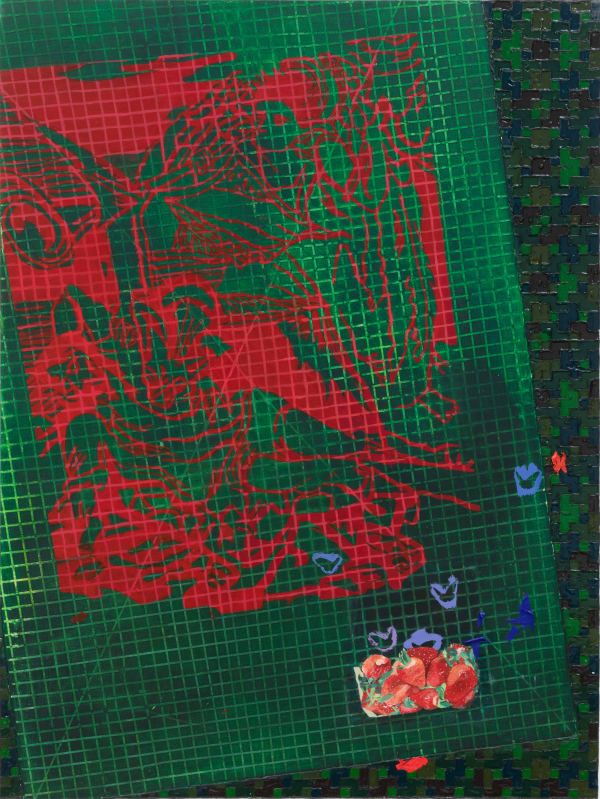-

Amanda Brown is a painter and curator based out of New York. Originally from Chicago she received her BFA from the School of the Art Institute of Chicago and her MFA from Hunter College in New York. She is a co-founder and co-curator of Survey Survey, a curatorial project focusing on exhibiting emerging artists in non-traditional and underused spaces in New York City and Upstate New York. She currently teaches undergraduate painting as an Adjunct Assistant Professor for Hunter College. Amanda’s large scale oil paintings use transparent layers of color, alongside subtle and precise gradients to create phenomenological depictions of architectural space.
-

Talia Levitt in with Clarity Haynes
-
CH: It’s interesting because painting is an illusion, always, right? And we’re always sort of creating something that’s not really there. But then there’s this way in which trompe l'oeil feels like it goes further and it actually is purportedly about fooling the viewer. So there’s this sort of power dynamic implied.
TL: Totally.
CH: But that’s interesting. I mean, obviously Trump knows how to do it in a sinister way. But that’s not the realm of still life painting.
You also talk about feminism and I know that you think about that a lot, as a woman artist who’s working in the realm of still life. What do you think the most feminist moments are for you in the show?
TL: In a way I think all the works are feminist. I think describing the female space or the female studio has a feminist angle about it. And I also think that using, or coopting, men’s paintings for my own game—which I utilize, or I sample them all the time in the images—could be interpreted as a feminist strategy. But I guess the most overtly feminist painting is Blue, Period, which is a painting of a menstrual-stained blanket. Which is the strongest nod to Ab-Ex in room—like a stained image, perhaps a reference to Frankenthaler, but also the female mark in general.
-
CH: But I’m interested in the question of why trompe l'oeil now, beyond just aesthetics maybe?
TL: I have a couple answers to this question, I guess. But I’ll start with the reasons why I’m so drawn to it, and then I’ll get to sort of a more cynical answer. Well, because still life painting was and still is an underrated genre, at least in the European genre hierarchy structure, there’s like an underdog-edness to it that I think so many people can relate to, especially right now. Still life can be humble, and objects reflect our spaces and who we are and the lives that we live. It’s relatable and populist. So I feel like there’s something to those qualities that make it really appealing.
CH: Like it’s very down-to-earth. It’s not about the digital space, really, because it’s about our physical world that we are actually in.
TL: Yeah. It’s also so funny to think that trompe l'oeil is having a moment, because how many painters are painting in trompe l'oeil who are exhibiting right now?
CH: Actually kind of a lot!
TL: Kind of a lot, but like—20?
CH: But 10 years ago, which isn’t that long ago, that sort of painting wasn’t really happening. Everybody wanted to be an abstract casualist, provisional painter. Zombie formalism, you know? The fact that people are painting representationally at all, and then that there’s actually a subset of people interested in trompe l'oeil? I see it as quite a phenomenon.
TL: It is cool. I was also thinking, when I considered this question earlier, when I was at Skowhegan there were only two or three painters who painted directly from life, of 65 artists. And I was the only still life painter, I’m pretty sure.
CH: When you say, “work from life,” do you mean not from photographs?
TL: I mean not from photographs or imagination, or abstraction. So the question of why trompe l'oeil or the relevancy of trompe l'oeil still life did come up in conversation in studio visits.
CH: Oh, yeah? Interesting. Does anything stand out in your memory as something that someone might have suggested as a reason?
TL: I feel like I’ve spent a bit of time defending it, actually.
CH: Really. Did people have some kind of negative idea about it that they would throw out?
TL: No, not negative per-se. I think the question of relevancy or whether or not it had enough importance, during a time of so much turmoil—and this was before the pandemic, of course, but everything happening in the world and in politics, et cetera, is and was so dramatic. But I also believe, and I think that artists there and in general believe that art and painting should represent all facets of lived reality and experience, not just the headlines. So while I think that still life is perhaps traditionally a more subtle integration with politics and lived experience or something, it’s a bit more humble, but I think that it’s still extremely important.
The full transcript can be read here.
-
Clarity Haynes
Clarity Haynes is a New York-based painter. Her recent solo show, Altar-ed Bodies, was presented at Denny Dimin Gallery by Benjamin Tischer of New Discretions. She has received awards from the Pollock-Krasner Foundation, the New York Foundation for the Arts, the MacDowell Colony, and the Corporation of Yaddo. Her work has been widely reviewed, including in ArtForum, the New York Times, Hyperallergic, and the New Yorker. She has written about art for BOMB, The Brooklyn Rail, Hyperallergic and ArtNews, among other publications.
Talia Levitt: In Conversation
Past viewing_room










